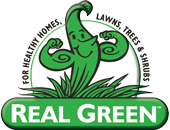|
|

|
|
Carpetweed
Mollugo verticillata
Summer annual. Stems green, smooth. Branches along ground in all directions from swollen nodes, forming flat mats. Smooth, tongue like leaves in spread clusters of five to six at each joint. Flowers small, white Seed is orange-red. Found in cultivated soils. |
|

|
|
Redroot Pigweed
Amaranthus retroflexus
Summer annual. Stems erect, to six feet tall, rough textured, freely branching. Pull green leaves, long petioles. Small, green flowers in dense spikes in upper leaf axils and stem ends, with three spiny bracts around each flower. Shiny black, tiny seed. Found in cultivated fields, barnyards, fencerows and waste areas.
Smooth pigweed (A. hybridus) is similar but petioles shorter, plant texture not rough, with fewer, less dense flower spikes |
|

|
|
Spiny Amaranth
Amaranthus spinosus
Summer Annual. Reddish, nearly smooth, slightly branched in lower proportion. Plant is one to three feet tall. Leaves alternate, dark green. Spines 1/4 to 1/2 inch long, in leaf axils. Small, spiny flowers in dense, finger-like spikes at ends of stems and branches. Shiny black seed. Found in Livestock feeding and holding areas, cultivated fields. |
|

|
|
poison-ivy
Rhus radicans
Perennial woody vine or shrub, often climbing by short rootlets on trees or fences. Smooth stems, light brown to grayish. Alternate leaves with three large, broad, shi,ny leaflets with either smooth or irregular-toothed edges. Smooth, almost round, greenish-white berries about 1/4 inch diameter. Found in open woods, fencerows, old fields and on ditch banks.
|
|

|
|
hemp dogbane
Apocynum cannabinum
Perennial. Stems erect, one to three feet tall from woody, horizontal rootstocks, with milky sap. Leaves smooth, elliptical, narrow, erect. Flowers small, with five greenish-white petals. Seed pod long and slender, curved. Seed with soft, silky hairs on one end. Found in old fields and wasteland. |
|
|
|

|
|
honeyvine milkweed
Ampelamus albidus
Perennial. Smooth, twining vine, without milky juice. Opposite leaves smooth, broad, heart-shaped, pointed, with long petioles. Small, whitish flowers in clusters on stalks from leaf axils. Seed pod brownish-green, smooth and pointed. Seed brown, oval, flattened, with silky white hairs. Found in rich, moist, cultivated fields and fence rows. |
|

|
|
butterfly milkweed
Asclepias tuberosa
Perennial. Stems usually one to four, clustered from rootstock, one to two feet long. Stems without noticeably milky sap. Leaves broadly oval, rough-hairy, clasping stem. Flowers in clusters or racemes, variable color from light yellow to orange to red. Seed pod a follicle, egg-shaped seed with silky white hairs. Found on dry, open soils. |
|

|
|
trumpetcreeper
Campsis radicans
Perennial woody vine. Spreads by seed and roots. Stems smooth, 20 to 40 feet long. Leaves opposite,6tbl$inches long, compound, with 7 to 11 leaflets. Flowers fu1}nel- or trumpet-shaped, large, color orange to scarlet, in short- stemmed clusters. Seed pod four to six inches long, round but flattened on two sides, slightly curved. Found in fence rows and fields. |
|

|
|
japanese honeysuckle
Lonicera japonica
Perennial twining or trailing woody vine. Leaves oval, smooth margins, short petioles. Young stems green to red, gray and brittle with age. Flowers white or tinged with purple, turning light yellow. Very fragrant. Berries black. Aggressive weed found in fencerows, forestland and old fields. |
|

|
|
corn cockle
Agrostemma githago
Winter annual. Stems erect, slender, rough, hairy, swollen at joints Leaves opposite, joined at base. Flowers large, reddish-purple to purple. Seed pod ribbed, bladder- or urn-like, seed lack and rough. Seed poisonous. Found in grain crops. |
|
|
|

|
|
heartleaf drymary
Drymaria cordata
Annual. Stems prostrate, succulent, spreading. Leaves round to kidney-shaped, opposite, bright green. Flowers inconspicuous, With oval seed pod. Found in gardens, roadsides, ditches in warmest regions of Southeast. |
|

|
|
mouseear chickweed
Cerastium vuIgatum
Perennial. Hairy, slender, spreading to erect stems. Leaves small, very hairy, opposite, attached directly to stem. Five small, white flower petals notched at tips. Seed pods very small with many tiny, brown seed. Found in lawns, pastures, abandoned fields.
|
|
|
